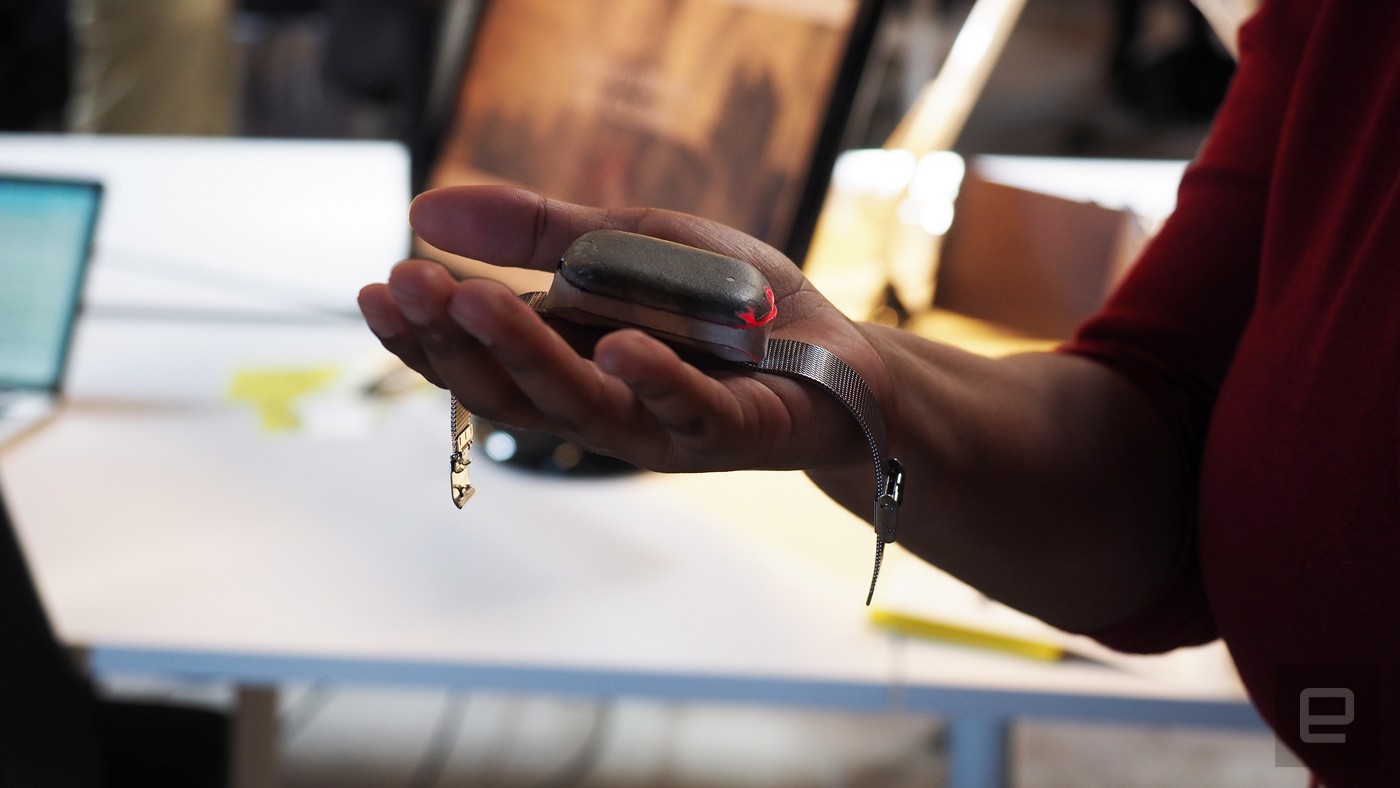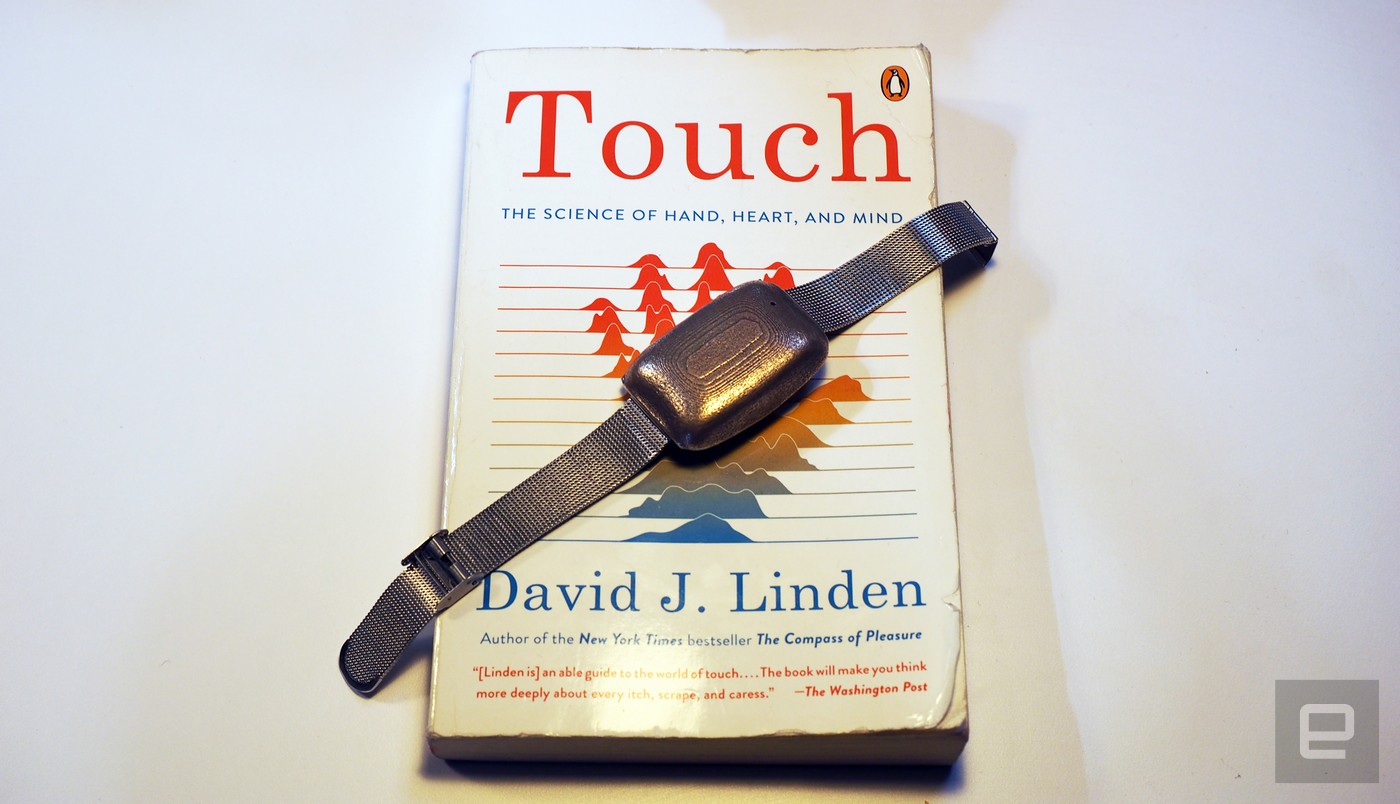A haptic wristband could help the blind ‘see’ the world
Technology to help the blind navigate usually focuses on replacing the sight they’re missing or by adding auditory cues to an already cluttered soundscape. But for many sight-impaired individuals, the sense they rely on most is one that tends to be ignored by a lot of tech-based solutions: touch. It’s a subtle way to convey a lot of information, and the design company WearWorks is looking to take advantage of this with its new haptic wristband, guiding people around via simple vibrational cues.
WearWorks is based out of Urban-X in Brooklyn, a new accelerator focused on startups that make cities more livable. That includes tackling issues like pollution, energy and transportation. Walking is something we all do, and there’s already existing infrastructure to help the blind get around, like traffic lights that announce when it’s safe to cross and braille plaques on subway platforms. Rather than try and upgrade or expand these existing systems, WearWorks decided to focus on something most individuals carry around with them: a phone.
The wristband connects to a handset, and there’s even a little haptic feedback to help navigate the purpose-built app. Once set up, there’s no need to fuss with the screen. Simply tell it where you need to go, and the wristband will vibrate to guide you there. It creates a virtual “wall,” buzzing when you’re facing the wrong way and going silent when the right path is ahead, as if there’s an open door waiting. WearWorks CEO Keith Kirkland said that in testing they found that something like 80 percent of users preferred the haptic feedback to where they shouldn’t go, and that everyone found the binary of buzzing/no buzzing pretty intuitive.

I tried the wristband myself, turning circles around the Urban-X lab. It went absolutely crazy when I faced south, a nonstop clatter in my hand. But, once I turned 180 degrees, it went silent. Although I eventually figured out what it wanted, the virtual wall concept wasn’t immediately apparent to me, and I was confused as to which direction it wanted me to walk — perhaps I’m part of that 20 percent who prefers to be prodded.
The band I was shown was an early prototype, and there’s still a lot of design work ahead before its probable launch in 2018. Despite its primary audience, WearWorks is still concerned with making sure it looks fashionable. But a lot of attention is being paid to how it feels — not just making it comfortable, but also tactilely pleasing. After all, it’s meant to be touched.
(52)
















